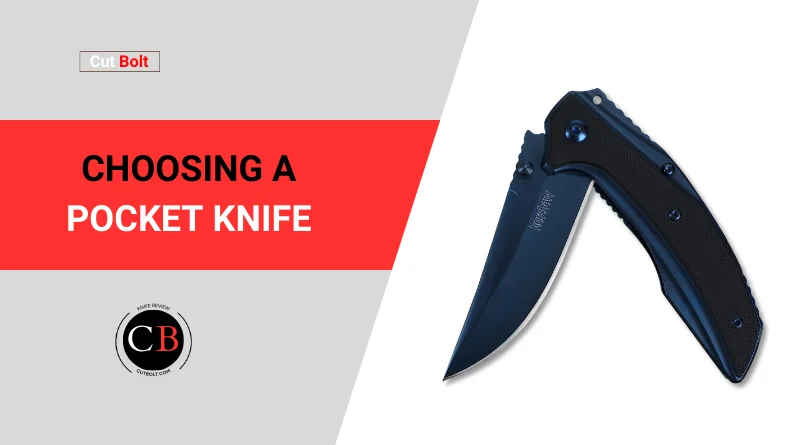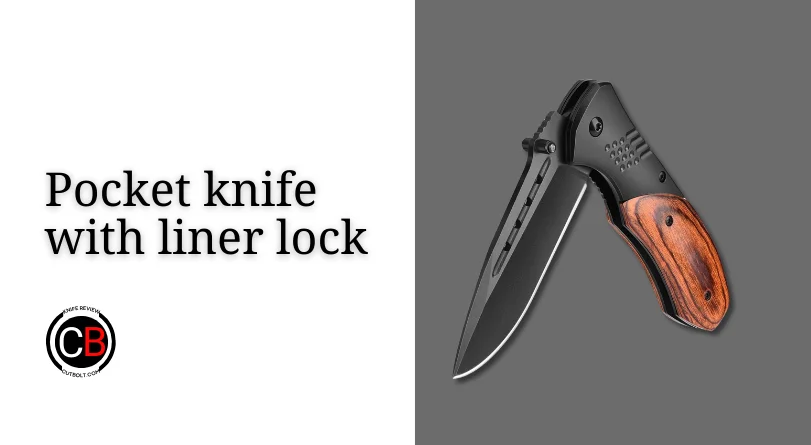Having a pocket knife is an essential tool for everyday carry. It is handy for many tasks, from opening packages to cutting rope, and even self-defense. As someone who has owned and carried a pocket knife for years, I can attest to the usefulness of having one on hand at all times.
In this guide, I will show you how to choose a pocket knife and things to consider before buying one.
Table of Contents
Types of Pocket Knives
When choosing a pocket knife, the first thing to consider is the type of knife you need. There are many different types of pocket knives available, including folding knives, fixed-blade knives, multi-tools, and more.
- Folding knives are the most popular type of pocket knife and come with different locking mechanisms, making them safe to use, and easy to carry.
- Fixed-blade knives are more durable and can handle heavier tasks, but they are not as easy to carry around. Multi-tools, on the other hand, offer versatility and convenience, as they come with additional tools like pliers, screwdrivers, and more.
When deciding what type of pocket knife to choose, you should consider what tasks you’ll be using it for.
If you need something lightweight and easy to carry, a folding knife is your best bet. However, if you need a knife for more complicated tasks, a fixed-blade knife or multi-tool might be the better option.

Blade Materials and Shapes of Pocket Knife
The blade material is another important factor to consider when choosing a pocket knife. The most common materials used for blades are stainless steel, carbon steel, and Damascus steel. Stainless steel is the most popular choice because it is durable, corrosion-resistant, and easy to maintain.
Carbon steel is another popular choice, as it is more durable than stainless steel and holds an edge longer.
Damascus steel is a more premium choice, as it is made by forging multiple layers of steel together, creating a unique and beautiful pattern.
The blade shape is another consideration to make. The most popular blade shapes include clip point, drop point, and tanto.
- Clip point blades are versatile and are good for most tasks.
- Drop point blades are more robust and are better for heavy-duty tasks like hunting and camping.
- Tanto blades are great for piercing, making them ideal for self-defense.
Between 7 and 10 cm is the most commonly used blade length. It’s enough to ensure the knife’s solidity while remaining functional in all circumstances.

What material is good for a pocket knife handle?
A good handle for your pocket knife is quite important as you will be using the knife frequently and carry with you most of the time.
Here are the things I suggest you to keep in mind about knife handle while choosing a pocket knife:
Different handle materials
Right or left-handed, for men, women or even young adults? Choosing the right pocket knife means ensuring maximum comfort in the hand. You’ll need to choose from a range of materials:
- Wood: simple species will satisfy beginners, while noble species such as ebony will satisfy connoisseurs and collectors in search of top-of-the-range products.
- Resin: this guarantees excellent resistance to wear and presages the manufacturer’s ability to create unique models.
The handle of a pocket knife is just as important as the blade. The most common handle materials include wood, plastic, G10, micarta, and titanium. Wood is a classic choice and looks great; plastic is lightweight, durable, and affordable.
G10 is a premium option, as it is lightweight and incredibly strong, while titanium is another high-end choice that offers durability and corrosion resistance.
Handle length for comfort
The right handle length depends on the shape of your body. The following standards are considered when choosing a pocket knife:
- For men: A 12 cm long knife handle is suitable for men.
- For women: 11 cm long handle is recommended for women.
- For children aged 10: Ideal handle length is 10 cm for children aged 10 and above.

What safety matter you should consider while choosing a pocket knife?
Sharpness, aesthetics and comfort are all important considerations. Nevertheless, safety is an imponderable.
When we talk about safety, opening and locking are the features we are talking about. Here are the things to keep an eye for:
The opening system
The opening system is designed to make opening your pocket knife easier, and there are a number of different types. You can choose the most ergonomic alternative.
- The thumb stud is a knob-shaped protrusion on the blade. It is actually positioned on the left-hand side of the blade, so that the knife user can open it easily by pulling on the thumb stud. For left-handed or ambidextrous users, some knives feature a button on each side of the blade.
- The flipper is a pin located on the underside of the knife at the junction between the handle and the blade. A simple gesture with the thumb allows you to open your pocket knife.
- The thumbhole, as the name suggests, is a hole in the blade. Simply insert your thumb to open the blade of your folding knife.
- The Nail Nick is probably the best-known opening system. It’s a slit in the blade that allows you to open your knife by placing a fingernail in the notch.
The locking system
Of course, a pocket knife must be equipped with a system to prevent it from closing unexpectedly. There are several types of locking system.
- The liner lock: this is a pin that locks the blade of the knife when it is open. You need to move this rod each time you want to close your knife.
- The framelock: integrated into the handle of the knife, it prevents accidental opening.
- The ferrule: is a metal ring positioned between the blade and the handle, which is turned when the knife is open to prevent it from closing. This is a system traditionally used in the design of handcrafted pocket knives.

Budget Considerations for a Pocket Knife
When choosing a pocket knife, budget is an important factor to consider. Pocket knives come at different price points and it’s essential to choose one that meets your needs while staying within your budget.
Generally, the more expensive the knife is, the better the quality. However, this does not mean that you can’t find a good quality pocket knife on a budget. There are affordable options available that offer great value for money.
Final Words: How to Choose a Pocket Knife
Choosing a pocket knife can be overwhelming, given the many options available. However, by considering the type of knife you need, blade materials and shapes, handle materials and ergonomics, locking mechanisms, and budget, you can make an informed decision.
Remember to choose a knife that fits your needs and is comfortable to use. A good pocket knife is an essential tool that can last a lifetime, so it’s worth taking the time to choose the right one.

